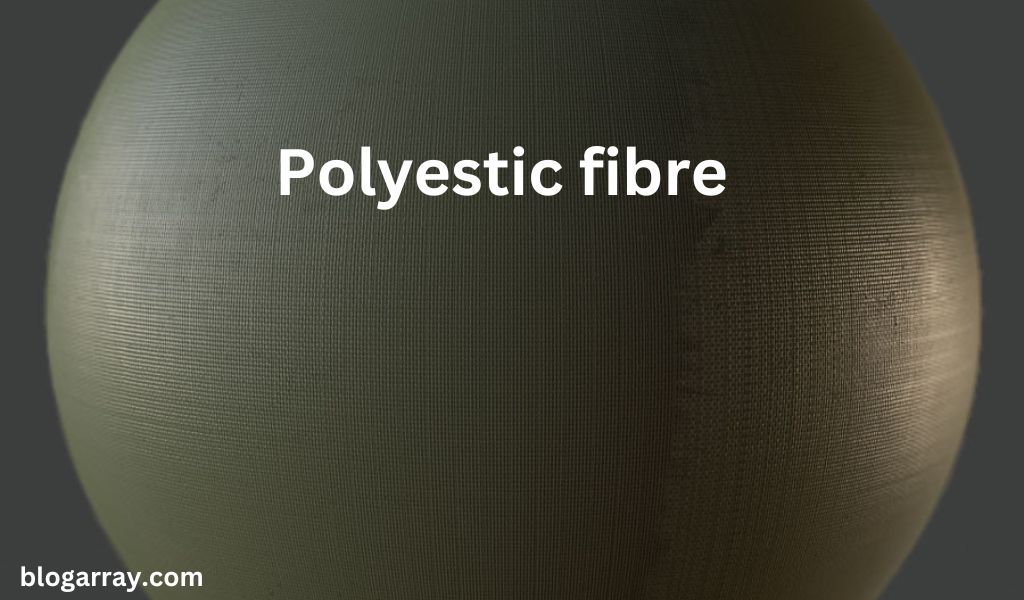Introduction to Polyester Fabric: Benefits, Types, and Care Tips
Polyester fabric has become a cornerstone in the textile industry, renowned for its versatility, durability, and affordability. Whether you’re exploring options for fashion, home decor, or industrial use, polyester often stands out as a go-to material. This guide delves into everything you need to know about polyester fabric, from its creation to its various types, advantages, and care instructions.
Understanding Polyester Fabric
Polyester fabric, a synthetic material made from petroleum-based products, has revolutionized the textile industry since its introduction in the mid-20th century. This section will explore the basic composition of polyester fabric, its manufacturing process, and its significance in today’s world.
What is Polyester Fabric?
Polyester is a category of polymers that primarily consist of polyethylene terephthalate (PET). The creation of polyester fabric involves a chemical reaction between ethylene glycol and terephthalic acid. The resulting polymer is spun into fibers, which are then woven or knitted into fabric. Polyester’s synthetic nature gives it unique properties, making it a popular choice for a wide range of applications.
The History of Polyester Fabric
Polyester was first synthesized by British chemists in the 1940s, but it gained commercial popularity in the 1950s with the introduction of Terylene, the first fully synthetic fiber. Over the decades, advancements in textile technology have improved the quality, texture, and functionality of polyester, solidifying its place in modern fashion and industrial applications.
Why Choose Polyester Fabric?
Polyester fabric offers numerous benefits that make it a preferred material for various industries. From its durability to its versatility, polyester stands out in multiple ways. Let’s explore the key reasons why polyester fabric is a smart choice.
Durability and Strength
Polyester is incredibly durable, with high resistance to abrasion, stretching, shrinking, and wrinkling. This strength makes it ideal for heavy-use applications, including outdoor gear, upholstery, and workwear. Its resistance to wear and tear ensures that polyester garments and products have a long lifespan, making them a cost-effective choice.
Moisture Resistance
One of the standout features of polyester fabric is its moisture-wicking ability. Unlike natural fibers like cotton, polyester does not absorb moisture, making it quick-drying and ideal for activewear and outdoor clothing. This property also helps in preventing the growth of mildew and mold, making polyester a hygienic choice for bedding and other home textiles.
Ease of Maintenance
Polyester fabric is easy to care for, requiring minimal effort to keep it looking good. It is machine washable, resistant to stains, and doesn’t require ironing. This low-maintenance nature makes polyester an excellent option for busy individuals who seek convenience without compromising on quality.
Types of Polyester Fabric
Polyester fabric comes in various forms, each with its unique characteristics and applications. Understanding these types can help you choose the right polyester fabric for your specific needs.
Polyester Woven Fabric
Woven polyester fabric is made by interlacing the fibers in a crisscross pattern, resulting in a strong and durable material. This type is commonly used in upholstery, curtains, and home furnishings due to its sturdy nature and resistance to pilling.
Polyester Knit Fabric
Knit polyester fabric is created by looping the fibers together, which gives it more stretch and flexibility compared to woven polyester. This type of fabric is often used in clothing, particularly in activewear and casual garments, because of its comfort and ease of movement.
Polyester Microfiber Fabric
Microfiber polyester is a finer version of traditional polyester fabric. It is incredibly soft and lightweight, making it ideal for applications where comfort is paramount, such as bed linens, cleaning cloths, and high-performance sportswear.
Blended Polyester Fabric
Blended polyester fabric is made by combining polyester fibers with other natural or synthetic fibers, such as cotton, wool, or spandex. These blends offer the best of both worlds, combining the durability and moisture resistance of polyester with the softness and breathability of natural fibers.
Applications of Polyester Fabric
Polyester fabric’s versatility allows it to be used in a wide range of applications, from fashion to industrial uses. Here, we’ll explore some of the most common uses of polyester fabric.
Fashion and Apparel
Polyester is widely used in the fashion industry due to its affordability, durability, and ability to mimic the appearance of more expensive fabrics like silk and wool. It’s commonly found in everything from casual clothing and sportswear to formal attire and outerwear. The fabric’s ability to hold vibrant colors without fading also makes it a favorite in fashion design.
Home Textiles
In home textiles, polyester is used in a variety of products including curtains, bed linens, upholstery, and carpets. Its resistance to stains, mold, and mildew makes it a practical choice for households, while its durability ensures that these items withstand regular use.
Industrial Uses
Polyester’s strength and resilience make it ideal for industrial applications. It’s used in the production of ropes, conveyor belts, safety belts, and various types of industrial fabrics. The fabric’s resistance to chemicals and environmental factors also makes it suitable for outdoor applications, such as tents, tarps, and flags.
Automotive Industry
In the automotive industry, polyester is used in seat belts, airbags, and upholstery due to its durability and strength. It also plays a role in the production of tire reinforcements and other automotive components, where resistance to wear and environmental factors is crucial.
Environmental Impact of Polyester Fabric
While polyester fabric offers many benefits, it’s essential to consider its environmental impact. Being a synthetic material derived from petroleum, polyester has both positive and negative environmental implications.
Recyclability and Sustainability
Polyester is recyclable, and the industry has made strides in creating recycled polyester, often from plastic bottles, reducing the reliance on virgin petroleum resources. Recycled polyester, or rPET, helps minimize waste and decreases the carbon footprint associated with polyester production.
Energy Consumption
The production of polyester fabric requires significant energy, contributing to its overall environmental impact. However, innovations in manufacturing processes are helping to reduce energy consumption and improve the sustainability of polyester production.
Microplastic Pollution
One of the primary environmental concerns with polyester is its contribution to microplastic pollution. When washed, polyester fabrics can shed tiny plastic fibers that make their way into waterways and oceans, posing a threat to marine life. To mitigate this issue, consumers can use washing bags designed to catch microfibers or opt for textiles that release fewer fibers.
Caring for Polyester Fabric
Proper care is essential to maintain the appearance and longevity of polyester fabric. Although it’s a low-maintenance material, following specific care instructions can help extend its lifespan.
Washing Tips
Polyester fabric is machine washable, but it’s best to use cold or warm water to prevent any potential shrinking or damage. Use a mild detergent, and avoid using fabric softeners, which can leave a residue on the fabric and reduce its moisture-wicking abilities.
Drying Polyester Fabric
Polyester fabric dries quickly, making it convenient for regular use. It’s best to tumble dry on a low heat setting or hang the fabric to air dry. Avoid high heat, as it can cause the fabric to melt or lose its shape.
Ironing and Wrinkle Removal
Polyester is resistant to wrinkles, but if ironing is necessary, use a low heat setting and place a cloth between the iron and the fabric to prevent direct heat contact. Alternatively, a steamer can be used to remove wrinkles without the risk of damaging the fabric.
Stain Removal
Polyester fabric is naturally stain-resistant, but if a stain occurs, treat it promptly. Blot the stain with a damp cloth and a mild detergent, avoiding rubbing, which can set the stain deeper into the fabric. For tougher stains, a mixture of water and vinegar or a specialized stain remover can be effective.
Polyester Fabric in Sustainable Fashion
The fashion industry is increasingly focusing on sustainability, and polyester fabric plays a significant role in this movement. From recycled polyester to ethical production practices, polyester is becoming a key material in the quest for eco-friendly fashion.
The Rise of Recycled Polyester
Recycled polyester, made from post-consumer plastic bottles, is gaining popularity as a sustainable alternative to virgin polyester. This process not only reduces waste but also consumes less energy and water compared to traditional polyester production.
Ethical Production Practices
Brands are adopting ethical production practices to minimize the environmental impact of polyester fabric. This includes using renewable energy sources in manufacturing, reducing water and chemical usage, and ensuring fair labor practices in factories.
Polyester in Circular Fashion
Circular fashion, which focuses on designing out waste and keeping materials in use, is a growing trend in the industry. Polyester, with its durability and recyclability, is well-suited for circular fashion models, where garments are designed for long life, easy repair, and eventual recycling.
Choosing the Right Polyester Fabric for Your Needs
With so many types and applications of polyester fabric available, selecting the right one for your needs can be daunting. Consider the following factors when choosing polyester fabric.
Purpose and Application
Determine the primary use of the fabric. For instance, if you’re looking for upholstery material, woven polyester might be the best choice due to its durability. For activewear, opt for knit polyester with moisture-wicking properties.
Texture and Comfort
Consider the texture and comfort level of the polyester fabric. Microfiber polyester, for example, offers a softer feel, making it ideal for bedding and clothing that will be in direct contact with the skin.
Budget
Polyester fabric is generally affordable, but prices can vary depending on the quality and type. Blended fabrics, for instance, might be more expensive due to the combination of materials. Always balance cost with the fabric’s intended use and expected durability.
Environmental Considerations
If sustainability is a priority, look for recycled polyester options or fabrics produced with eco-friendly practices. These choices not only reduce your environmental impact but also support the growing demand for sustainable fashion.
Conclusion
Polyester fabric is a versatile, durable, and cost-effective material that has a wide range of applications across various industries. Whether you’re looking for a sturdy fabric for industrial use, a moisture-wicking material for sportswear, or a low-maintenance option for home textiles, polyester offers something for everyone. As sustainability becomes increasingly important, the rise of recycled polyester and ethical production practices make this fabric a key player in the future of fashion and textiles. By understanding the different types, benefits, and care tips for polyester fabric, you can make informed choices that meet your specific needs while supporting a more sustainable world.
Also Read: Classic Pink Pearls
FAQs
What is polyester fabric made of?
Polyester fabric is made from synthetic polymers derived from petroleum-based products, primarily polyethylene terephthalate (PET).
How do you care for polyester fabric?
Polyester fabric is easy to care for—it’s machine washable, dries quickly, and is resistant to wrinkles. Use cold or warm water and avoid high heat when drying or ironing.
Is polyester fabric eco-friendly?
While polyester is derived from non-renewable resources, recycled polyester (rPET) offers a more sustainable option. The fabric’s durability also contributes to reduced waste over time.
Can polyester fabric be used for outdoor applications?
Yes, polyester fabric is commonly used for outdoor applications like tents, flags, and outdoor furniture due to its durability, moisture resistance, and resistance to environmental factors.
What are the benefits of using polyester fabric in fashion?
Polyester fabric is durable, resistant to shrinking and wrinkling, and holds color well, making it ideal for a wide range of fashion items, from activewear to formal attire.
Is polyester fabric comfortable to wear?
Polyester can be comfortable, especially when blended with other fibers like cotton or spandex. Microfiber polyester is particularly soft and suitable for direct skin contact.












